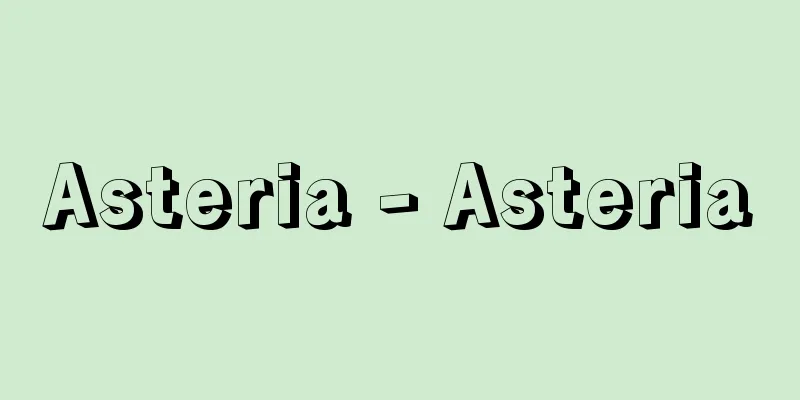Myopia

|
Axial myopia and refractive myopia [What kind of abnormality is this?] This is a refractive error in the eye where light entering the eye from a distance forms an image in front of the retina when looking normally (without accommodation). While close objects can be seen clearly, distant objects appear blurry and difficult to see. This is caused by either a long eye axis (the distance from the cornea to the retina) or too strong refractive power of the cornea or lens; the former is called axial myopia and the latter refractive myopia. What is commonly called myopia is axial myopia. Refractive myopia is caused by corneal diseases such as keratoconus or ciliary muscle diseases such as accommodation spasm. ◎There are two types of myopia: benign and malignant . Myopia can be broadly divided into two types based on the differences in its symptoms. ■ Simple myopia (benign myopia) It begins during elementary, middle, and high school, progresses rapidly during the growth period, and slows down in adulthood. Most myopia is benign. Although uncorrected vision may drop to below 0.1, it can be corrected to normal vision with glasses or contact lenses. ■Pathological myopia (malignant myopia) This is a type of myopia in which the axial length of the eye increases, causing the eyeball to elongate, resulting in degeneration of the posterior pole of the fundus, and is accompanied by visual impairment (reduced vision, visual field loss). The cause is axial myopia, which causes the eye axis to stretch considerably, stretching and thinning the retina and choroid (a membrane rich in blood vessels that nourish the retina), causing changes in the macula, which is important for seeing. As a result, the naked eye visual acuity is 0.1 or less, and vision cannot be easily corrected with glasses or contact lenses. The vitreous body also changes, making retinal detachment and retinal bleeding more likely to occur, and the severity of glaucoma also increases. It is also accompanied by various visual impairments. The incidence of pathological myopia is not very high. ◎Myopia is caused by genetic factors [Cause] There are two schools of thought about simple myopia. One is that it is caused by biological individual differences in which the eye's axial length is different from birth, and that the underlying cause is genetic predisposition. It is true that myopia is common among Asians, and the frequency of myopia varies considerably between races and ethnicities. Another theory is that if you continue to work in a job that requires you to see things up close, your eyes will always be in a state of accommodation, causing the ciliary muscles to tense up abnormally and the lens to thicken (known as accommodative spasm). If this condition continues, the axis of the eye will stretch and cause myopia. In the past, this was called pseudomyopia or pseudomyopia. However, even people who do not work in a job that requires them to see things up close can become myopic, and there are many people who do not become myopic even if they are always looking at things up close. Currently, the accepted view is that myopia is caused by a genetic predisposition. [Testing and diagnosis] Simple myopia is often discovered during school health checkups, but if your child has difficulty seeing the letters on the blackboard in class, you should have them examined by an ophthalmologist. Pathologic myopia is often discovered at home before a child enters elementary school. Both are diagnosed through visual acuity tests and refraction tests to measure the degree of refraction. ◎ It is a mistake to think that pseudomyopia can be cured. [Treatment] There is a theory that if treatment is administered when the patient is in a pseudomyopic (pseudomyopia) state, myopia can be cured. This theory is based on the premise that myopia is refractive myopia and can be cured by relaxing the tension in the ciliary body. Various treatments have been attempted based on this theory, but they have proven to be largely ineffective. People who are predisposed to myopia will continue to become myopic, even with treatment. If you have mild, simple myopia and can carry out your daily life without glasses, there is no need to force yourself to wear them. If you have trouble seeing things far away, such as a blackboard, wear glasses with concave lenses or contact lenses only when necessary. If you have trouble seeing things far away, wear them all the time. If I don't want to wear glasses, I can use contact lenses, but I still need glasses to reduce the amount of time I have to wear them. Simple myopia may progress until about age 20, and if the degree of myopia changes and it becomes difficult to see, you should change your glasses. Glasses do not necessarily need to provide good vision at all times, and it is sufficient to have a degree of 0.8 to 0.9 for one eye, or 1.0 for both eyes. Glasses with a degree that is too strong can cause eye strain. Even with pathological myopia, wearing glasses can help children see to a certain extent. In early childhood, eyesight is still developing, so wearing glasses helps prevent amblyopia. If the degree of myopia becomes severe, a weaker degree can have the same effect, so contact lenses are more convenient than glasses. ● Regarding surgical treatment , the safety of myopia correction surgery has been increasing year by year thanks to improvements in surgical equipment, etc. Treatments for myopia may include surgery to reduce the degree of myopia by making many small scratches on the cornea, removing the cornea and changing its refractive power before replanting it, making incisions or removal with a laser to reduce refractive power, removing the lens and replacing it with an intraocular lens to reduce refractive power, and reinforcing the back of the eyeball to prevent the eyeball from becoming longer. Basically, surgery is suitable for people over 20 years old, and cannot be performed on people whose eyeballs are still developing. The effectiveness of treatment varies depending on the state of refraction, so please consult with your doctor. [prevention] Prevent overstraining your eyes. After working for 1-2 hours looking at something close up, take a 15-20 minute break and look at something a little further away. Also, when studying, pay attention to the lighting in the room, maintain good posture, make sure printed materials are easy to read, and have your eyes tested frequently to be aware of your eyesight. Although it cannot be said that doing these things will definitely prevent myopia, they are a good way to prevent eye fatigue. Source: Shogakukan Home Medical Library Information |
|
◎軸性近視(じくせいきんし)と屈折性近視(くっせつせいきんし) [どんな異常か] ふつうに見たとき(無調節状態)に、遠くから目に入ってきた光が網膜面の前方に像を結ぶ目の屈折異常です。近いところはよく見えるのに、遠いところはぼんやりとして見えにくくなります。 これは眼軸(がんじく)(角膜(かくまく)から網膜(もうまく)までの距離)が長いか、角膜や水晶体(すいしょうたい)の屈折力が強すぎるかのいずれかが原因でおこり、前者を軸性近視、後者を屈折性近視といいます。一般に近視と呼ばれているものは、軸性近視をさします。屈折性近視は、円錐角膜(えんすいかくまく)のような角膜の病気や、調節けいれんといった毛様体筋(もうようたいきん)の病気によっておこるものです。 ◎近視にも良性と悪性がある 近視は、その症状のちがいから2種類に大別できます。 ■単純近視(良性近視) 小・中・高校在学中に始まって成長期に急速に進行し、成人すると進行が遅くなるものです。大部分の近視はこの良性近視です。 裸眼視力が0.1以下になることもありますが、めがねやコンタクトレンズで正常の視力に矯正(きょうせい)できます。 ■病的近視(悪性近視) 眼軸長延長により眼球の伸展をひきおこし、眼底後極部に変性をきたす近視で、視機能障害(視力低下、視野欠損)をともなうものをいいます。 原因は軸性近視で、眼軸がかなりのびるために、網膜(もうまく)や脈絡膜(みゃくらくまく)(網膜を栄養する血管の豊富な膜)が引きのばされて薄くなり、ものを見るのに重要な黄斑部(おうはんぶ)に変化がおこります。そのため、裸眼視力も0.1以下で、めがねやコンタクトレンズでは視力がよく矯正できません。硝子体(しょうしたい)も変化するので、網膜剥離(もうまくはくり)や眼底出血をおこしやすく、緑内障(りょくないしょう)の程度も増加します。また、さまざまの視機能障害をともないます。 病的近視の発生頻度は、あまり多いものではありません。 ◎遺伝的素因で近視はおこる [原因] 単純近視については、2通りの考え方があります。1つは、眼軸の長さには生まれつきの長短があるという生物学的個体差に起因し、その根底には遺伝的な素因を重視する考え方です。確かに東洋人には近視が多く、近視は、人種や民族でその頻度にかなり差があるのは事実です。 もう1つは、近いところを見る仕事を続けると、目は常に調節状態にあるため毛様体筋が異常に緊張し、水晶体が肥厚します(調節けいれんという)。この状態が続くと、眼軸がのびて近視がおこるという考え方です。昔は偽近視(ぎきんし)、または仮性近視(かせいきんし)と呼ばれていました。しかし、近くを見る仕事に従事していない人でも近視になりますし、常に近くを見ていても近視にならない人も少なくないのです。 現在では、近視は遺伝的な素因が関係しておこるという考え方のほうが支持されています。 [検査と診断] 単純近視は、多くは学校の健康診断で発見されますが、教室で黒板の字が見にくいようであれば、眼科で検査を受けましょう。病的近視は、小学校入学前に家庭で発見されることが多いものです。 いずれも視力検査、屈折検査で屈折度を測定して診断されます。 ◎「仮性近視は治る」は誤り [治療] 偽近視(仮性近視)の状態のときに治療を行なえば、近視は治るという考え方があります。この考え方は、近視は屈折性近視であって、毛様体の緊張をゆるめれば治るという立場に立つもので、それによってさまざまの治療が試みられてきましたが、ほとんど効果のないことがわかりました。治療をしても、近視になる素質をもった人は近視になってしまうのです。 軽い単純近視で、めがねをかけなくても日常生活に不自由がなければ、むりにめがねをかける必要はありません。黒板など遠くを見るのに不便があれば、凹(おう)レンズのめがね、あるいはコンタクトレンズを、必要に応じてそのときだけ使用するようにします。ふだんも不自由ならば、常に使用しましょう。 めがねをかけたくなければコンタクトレンズにしますが、その装用時間を少なくするためにもめがねは必要です。 単純近視は20歳くらいまで進行する可能性があり、度が変わって見にくくなれば、めがねをかえるようにします。めがねは必ずしも常によく見える必要はなく、片方0.8~0.9、両眼で1.0ぐらいに合わせれば十分です。あまり度の強いめがねは眼精疲労をひきおこすからです。 病的近視でも、めがねをかけたほうがある程度よく見えます。幼児期ではとくに視力の発達過程ですから、めがねをかけ、弱視となるのを予防します。近視の度が強くなった場合は、弱い度で同じ効果があるので、めがねよりコンタクトレンズのほうが便利です。 ●手術治療について 手術機械の改良などによって、年々、近視矯正手術の安全性も高くなってきました。 近視の治療法として、角膜に小さな傷をたくさんつけて近視の度を弱くする、角膜を切除して屈折力を変えてから再移植する、レーザーで切開や切除を行なって屈折力を弱くする、水晶体を摘出して眼内レンズに入れ換えて屈折力を弱くする、眼球の後部を補強して眼軸が長くなるのを防ぐなどの手術が行なわれることがあります。 手術が適応されるのは、基本的に、20歳以上の人で、眼球が発育途中の人は手術できません。治療効果は、屈折の状態によってちがいますので、医師とよく相談してください。 [予防] 目の過労を防止することです。1~2時間近いところを見る作業を行なったら、15~20分休憩し、やや遠方を見るようにします。また、勉強の際は部屋の採光に注意して姿勢を正しく保ち、印刷物は読みやすいものにする、視力検査をしばしば受けて視力を自覚しておくことなどが近視の予防法といわれています。これらを実行すれば必ず近視が予防できるとはいいきれませんが、目の疲れを防ぐにはよいことです。 出典 小学館家庭医学館について 情報 |
<<: Gold thread (fragrant wood) - Kinshi
>>: Pinicola enucleator; pine grosbeak
Recommend
Takemoto Settsu Daijo
Born: March 15, 1836, Osaka [Died] October 9, 1917...
Great Purification - Oharae
It is a purification ceremony to remove sins and ...
Spielplatz
... In the Meiji period, Japan, which had adopted...
synaptic gap
…Mammalian synapses are usually chemical synapses...
Rokkaku-shi
Shugo of Omi Province and a feudal lord during th...
Tachibana Kozaburo
A right-wing agrarian thinker. Born in Ibaraki Pr...
Gaseous hydride
...often exhibit strong reducing properties. (2) ...
Rappaport, R.
...The view of culture as an adaptive system sees...
Jumong - Shumou
The legendary founder of Goguryeo, Korea. The Gwa...
Rhyme - King
Rhetorical device in which the same or similar so...
Genkai - Genkai
A Japanese dictionary. Edited by Otsuki Fumihiko,...
musical sand
...However, the future of sand supply to meet dem...
Phenylephrine
C 9 H 14 ClNO 2 . Also called neosynephrine. It is...
Alternative psychosis
… Landolt discovered a phenomenon called forciert...
Benen - Benen
1202‐80 (Kennin 2‐Koan 3) A Rinzai sect monk in th...









